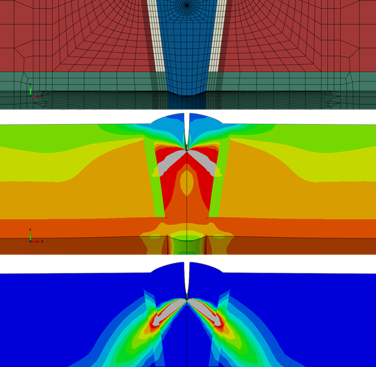Structural integrity is an engineering field that plays a fundamental role in ensuring that structures are fit to do what they are designed to under normal operating conditions, and are safe when conditions exceed the original design intent. Integrity is not just a case of good design; it needs to be maintained for the life of a structure. Whilst many types of damage mechanisms can arise, corrosion (local metal loss) and crack-like flaws (due to fatigue or welding defects) are two of the most common. Established fitness-for-service (FFS) and engineering critical assessment (ECA) standards such as API 579/ASME FFS-1 and BS 7910 provide calculation methods that can be performed with a spreadsheet to assess the acceptability of these damage mechanisms. However, these methods have limitations and can only be applied for simple geometries and loading conditions. When structures and loading are more complex, the damage is near a structural discontinuity, or there is a desire to reduce the conservatism in the assessment, Finite Element Analysis (FEA) can be used to provide a more accurate answer.
Numerical Modelling and Optimisation at TWI
The Numerical Modelling and Optimisation section at TWI is made up of Chartered Engineers, Chartered Mathematicians and NAFEMS-certified Professional Simulation Engineers. The section offers a variety of computational engineering capabilities including finite element analysis (FEA), computational fluid dynamics (CFD), and data analysis. TWI modelling staff are world-leading experts in applications of FEA for structural integrity assessments. Our team includes members of the British Standard 7910 committee, the UK nuclear structural integrity code R6, and are highly cited researchers in fracture, fatigue and damage mechanics, having recently received an award from the International Conference on Ocean, Offshore and Arctic Engineering (OMAE) [1].
 FEA of a crack in the girth weld of a clad pipe
FEA of a crack in the girth weld of a clad pipe